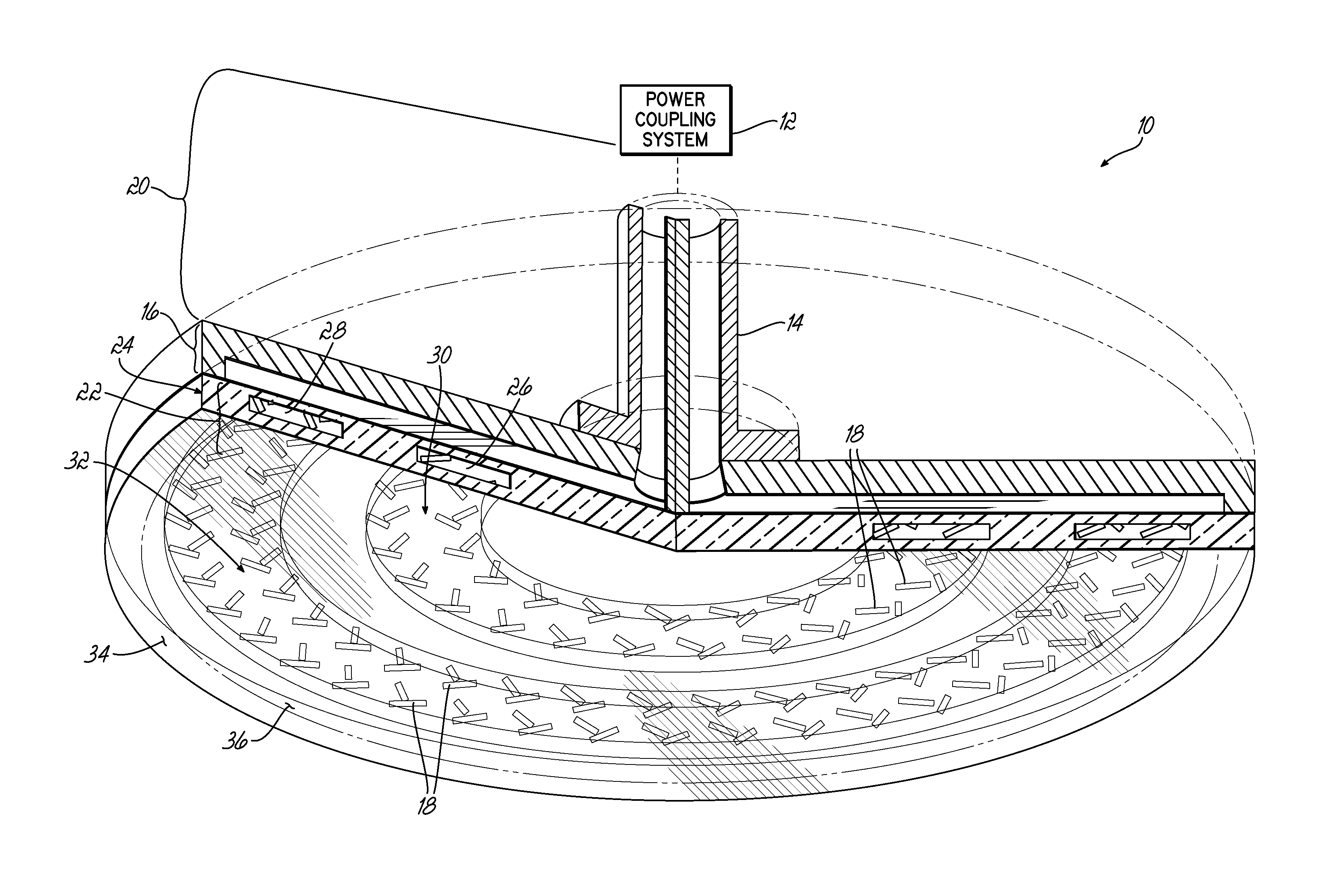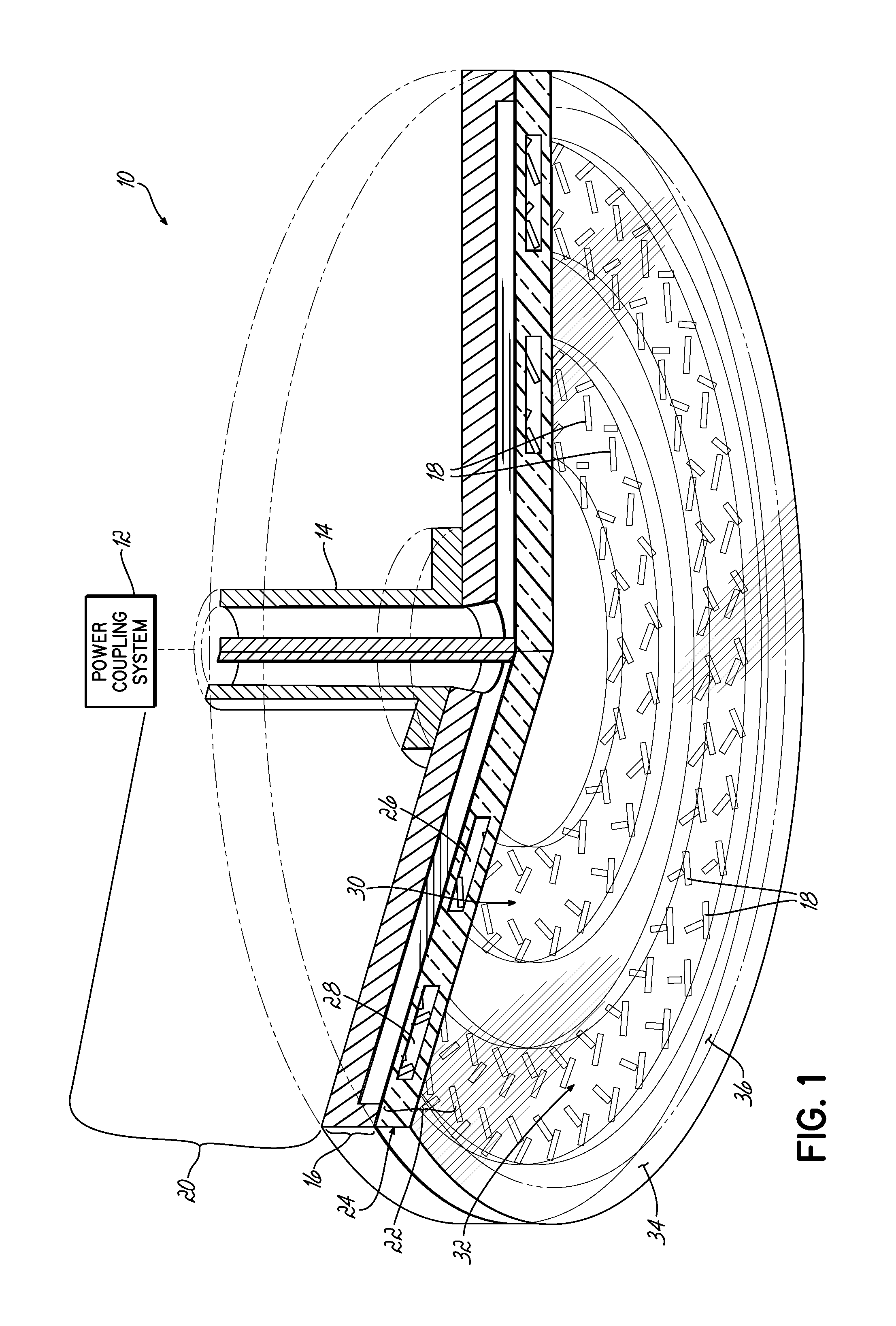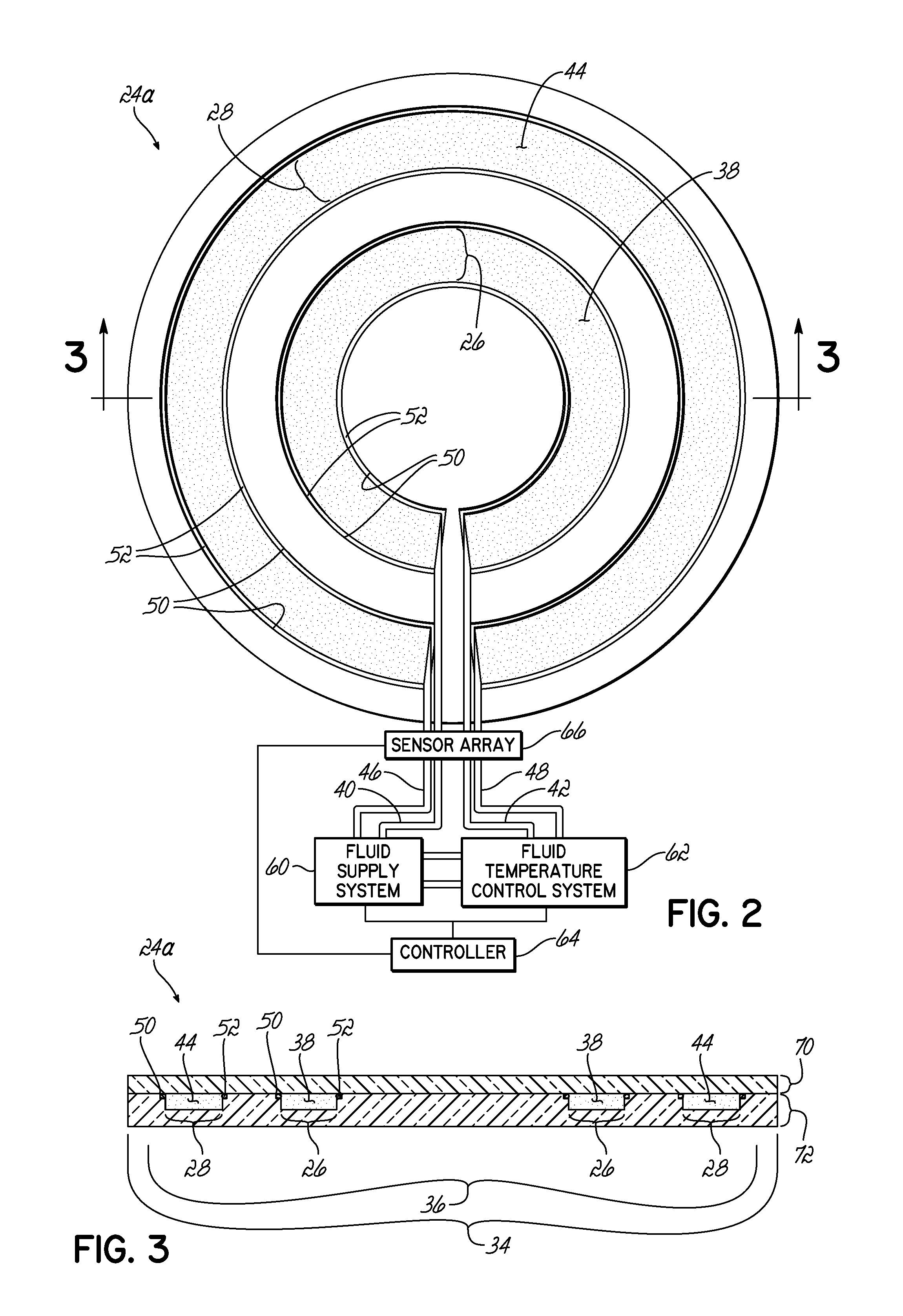Control of uniformity in a surface wave plasma source
a surface wave plasma and uniformity control technology, applied in the direction of plasma technique, antenna details, antennas, etc., can solve the problems of weak chemical bonding molecules that can be cracked effectively near the gas ring, the density of plasma is often substantially non-uniform near the substrate, and the practicability of swp sources still suffers from several deficiencies
- Summary
- Abstract
- Description
- Claims
- Application Information
AI Technical Summary
Benefits of technology
Problems solved by technology
Method used
Image
Examples
Embodiment Construction
[0015]For more efficient control over plasma density distribution in a processing chamber, the present invention adjusts the microwave power emission from at least one region of slots in a slot antenna assembly of a surface wave plasma source (“SWPS”).
[0016]One of ordinary skill in the art will recognize that the dielectric properties of many liquids change as a function of their temperature. Consequently, the microwave (“MW”) penetration depth (“Dp”) into a liquid can be controlled by changing the temperature of the liquid. The penetration depth Dp can be expressed by the following formula:
Dp=λ02π(2ɛ′)1[{1+(ɛ″ɛ′)2}0.5-1]
wherein ε′ is the relative dielectric constant, ε″ is relative dielectric loss or energy dissipation (ε″ values are higher at lower temperatures), and λ0 is the free space wavelength of the microwave radiation (12.2 cm for 2.45 GHz).
[0017]For example, MW penetration depth Dp in distilled water at 2.45 GHz varies between 1.3 cm and 5 cm when the temperature of the di...
PUM
 Login to View More
Login to View More Abstract
Description
Claims
Application Information
 Login to View More
Login to View More - R&D
- Intellectual Property
- Life Sciences
- Materials
- Tech Scout
- Unparalleled Data Quality
- Higher Quality Content
- 60% Fewer Hallucinations
Browse by: Latest US Patents, China's latest patents, Technical Efficacy Thesaurus, Application Domain, Technology Topic, Popular Technical Reports.
© 2025 PatSnap. All rights reserved.Legal|Privacy policy|Modern Slavery Act Transparency Statement|Sitemap|About US| Contact US: help@patsnap.com



